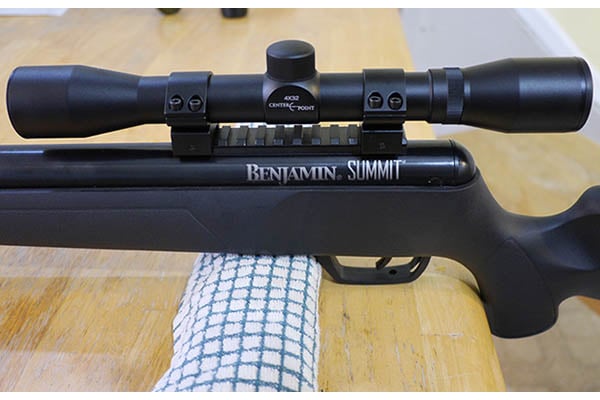
Last Updated on
Air rifles provide the perfect platform for beginners to learn basic marksmanship skills, but they are equally serious, highly competitive rifles that fit well in both hunting and precision target shooting pursuits. Whether you’re a beginner or an air rifle pro, airgun scope mounting is a vital portion of any new or existing air rifle setup. Your air rifle may have came with a scope in the box or you may have purchased one separately. Either way, the first order of business is to mount the air rifle scope.
Dovetail vs. Rail Mounts
Many basic air rifles use dovetail mounts as they are a tried and true mounting system. Often the airgun has dovetail grooves placed into the top of the receiver. The scope rings fit on top of these grooves, and the rings are screwed into place on the grooves to keep the scope mounted. The dovetail mount is a pretty basic system, but if you have to remove and re-mount the scope, it is difficult to install it in the same spot.
When shopping for an air rifle, the addition of a rail mount is a worthwhile upgrade. The Picatinny rail provides a solid mounting solution, and its grooves allow the scope to be removed and mounted with less worry about losing zero. If you have a dovetail mount but would like to upgrade to a Picatinny rail on your air rifle, several manufacturers make dovetail to Picatinny rail adapters. Just make sure the adapter will fit your rifle before purchasing. Remember, your dovetail rings won’t fit on the Picatinny rail, so you’ll need new rings as well.
Initial Mount
Today we’ll be using a Picatinny rail mount on a Benjamin Summit Np2 Air Rifle in .177 caliber size. The addition of a Picatinny rail provides an ideal mounting platform, a nice upgrade on a premium air rifle like the Summit. First thing is first, place the airgun in a solid position with the rail facing up. A gun vise is idea for this, but you can also just secure the rifle with whatever you have around as long is it doesn’t scratch or harm it. For the purpose of this article, we used an old dish towel, which goes to show that you can get the job done without a gun vise if need be.
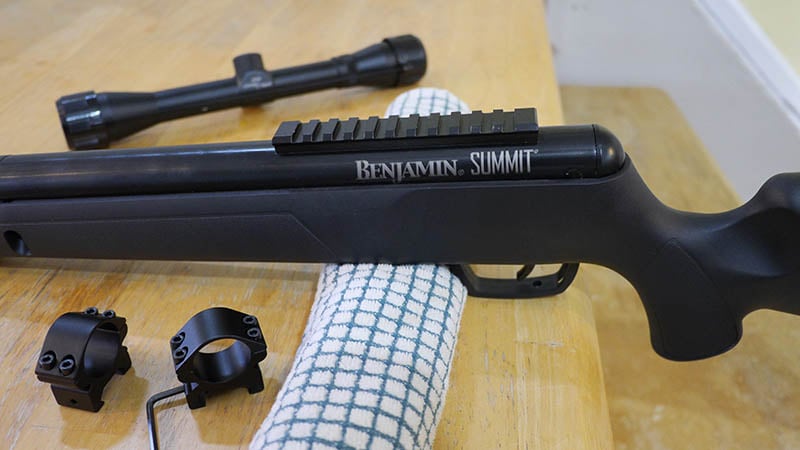
Next, you want to fit the rings onto the rail. Use a wrench suited for the rings or the tool included with the ring set. For now leave the top of the rings attached and mount both ring bases to the rail.
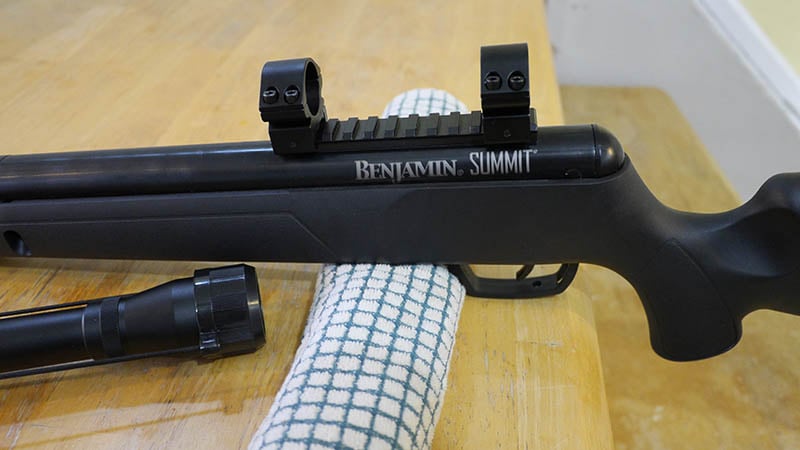
First Scope Fitting
Once the ring bases are secured tightly to the rail, you’ll want to remove the top of each ring. Keep track of each screw as you do so. You don’t want to lose a screw and end up crawling around on the floor looking for it. Find a container to store all loose parts, or place them on the table if you have a large enough work space.
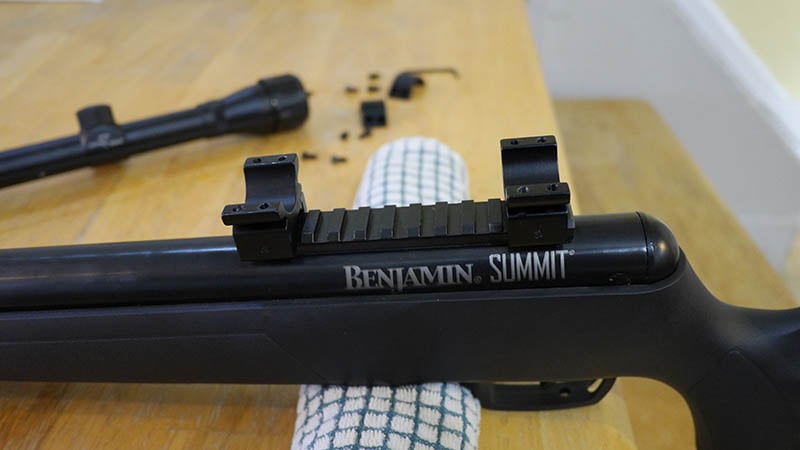
Once everything is removed, place the scope in the open rings and position it correctly. The common configuration is the windage turret on the right side and the elevation turret on the top.
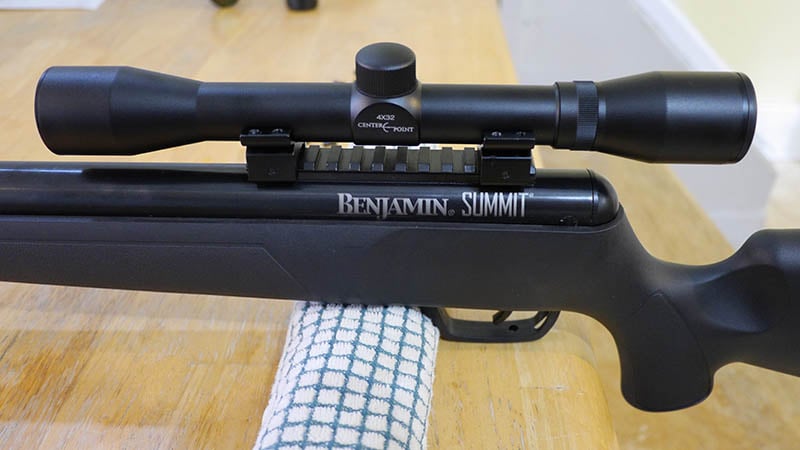
Once the scope is in the rings and oriented correctly, you’ll want to place the top of the rings back on over the scope. Insert the screws and gradually tighten them until both rings are on. The rings should still be loose and the scope should be able to move forward and back in the rings. Important: never over-tighten ring screws as it can damage the scope. We have a tendency to tighten screws until they can’t move any further, but you’ll want to take a more-delicate approach when mounting a scope.
Adjustment
Next, you’ll want to adjust the scope to find the proper eye relief distance for your use. Shoulder the air rifle and look down the scope like you normally would. Slide the scope back and forth in the rings until you can see clearly out of it. Make sure you’re in a comfortable, natural shooting position before deciding on the exact position of the scope.
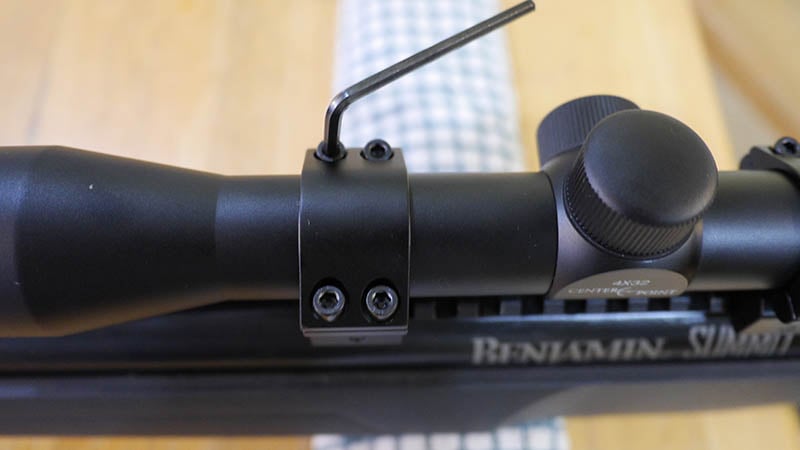
Tightening The Scope
Finally, it’s time to lock the scope position in place. Again this process involves gradual tightening of each screw. Start with one screw, tighten it just a little, and then move onto the next. You want pressure applied equally from each screw. Do not tighten one screw all the way and move on to the next. You won’t get the same fit. Don’t forget – tightening the screws too much can damage the scope. So go slow and make gradual adjustments until the scope is in a firm position.
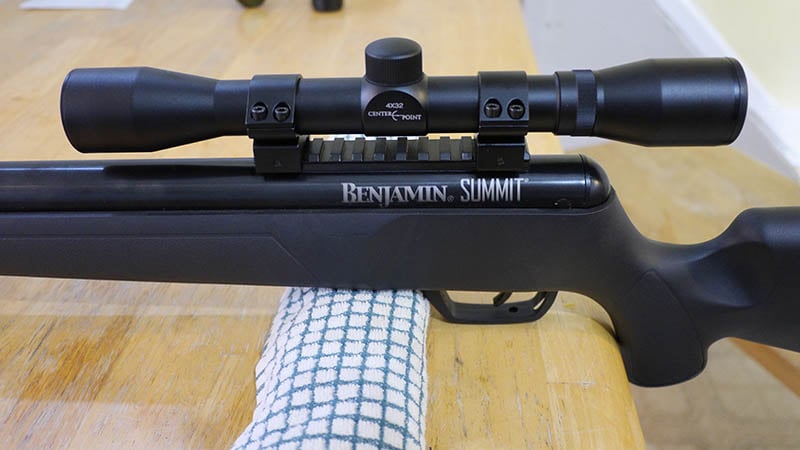
Upgrading Your Scope
If after time you’re not satisfied with the airgun scope included with your rifle, there are a ton of upgrade options on the market, many from top sport optics manufacturers. As you shop, remember that weight is a factor, and purchasing a scope that is much heavier than your previous scope may effect the performance of the airgun. Also certain scopes have different body sizes (generally 1 inch or 30mm). Pay attention to the size of the scope and only use rings that are approved for the scope you select.
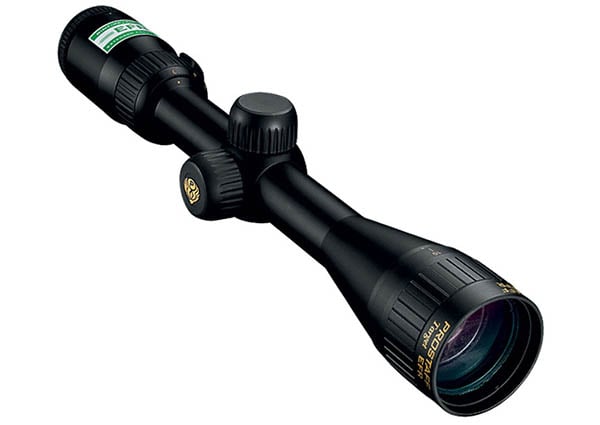




Comments (2)
Raynardo steppssays:
August 30, 2025 at 1:11 pmMy ring base doesn’t fit my picatinny rail I just put on
GRITR Sportssays:
September 2, 2025 at 9:11 pmYour rings are probably made for a different rail type, for instance, a dovetail rail. You’ll need to get rings specifically made for pic rails, or you could use an adapter but getting picatinny rings is easier